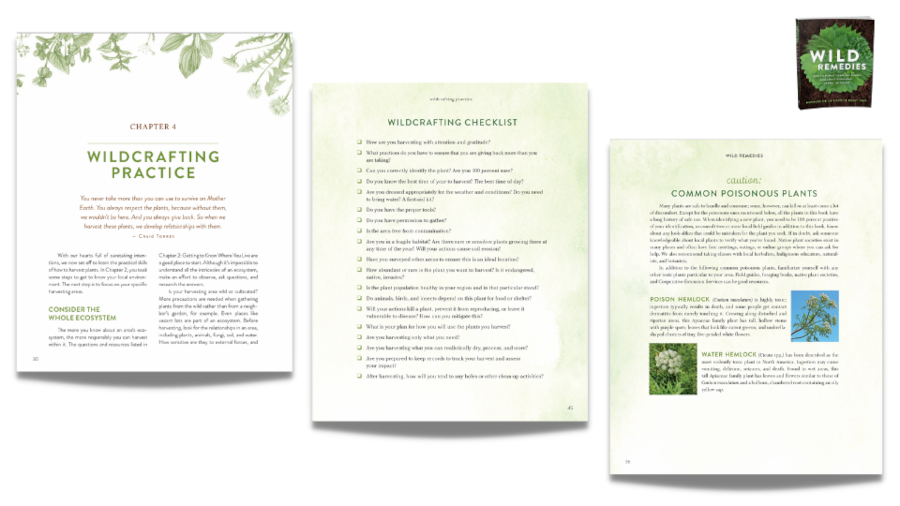Get weekly tips, recipes, and my Herbal Jumpstart e-course! Sign up for free today.
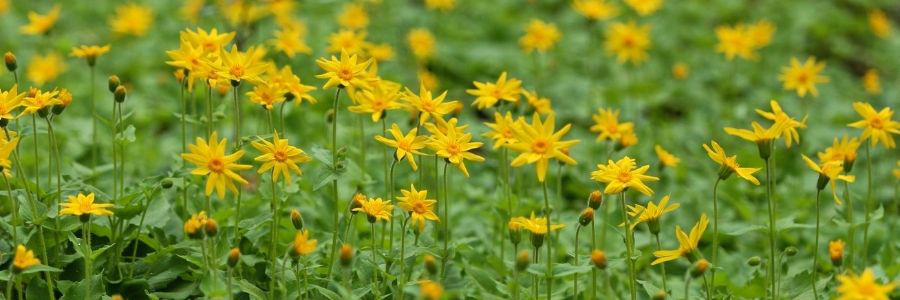
What is Arnica Used For?
Share this! |
|
What is arnica used for? One of my favorite arnica benefits is for bruises! In this video, I’m going to show you how to make an arnica cream using Arnica montana. Once you start making this cream, you’ll never want to be without arnica’s benefits again because it is so effective at relieving the pain, swelling, and inflammation caused by bruises, contusions, and sprains!
I’m also going to share why arnica is way better than ice for injuries and give you a step-by-step guide on how to make arnica cream for bruises.
You’ll come away from this episode knowing:
► Why arnica is so effective at decreasing swelling and accelerating the healing process of bruises and sprains… even in bringing some relief to swollen arthritic joints!
► Safety information you need to know when working with arnica
► Why it’s so important to source your arnica carefully
-- TIMESTAMPS -- What is Arnica Used For?
00:00 - Introduction to arnica
03:50 - Arnica heals injuries and reduces acute pain
06:49 - Arnica relieves chronic pain
07:29 - Arnica promotes circulation
08:12 - How to identify arnica (Arnica montana and Arnica cordifolia)
10:15 - Is that really arnica? Issues with arnica adulteration
13:11 - Arnica side effects and safety
14:39 - How to make arnica cream for bruises
19:38 - Arnica Fun Fact
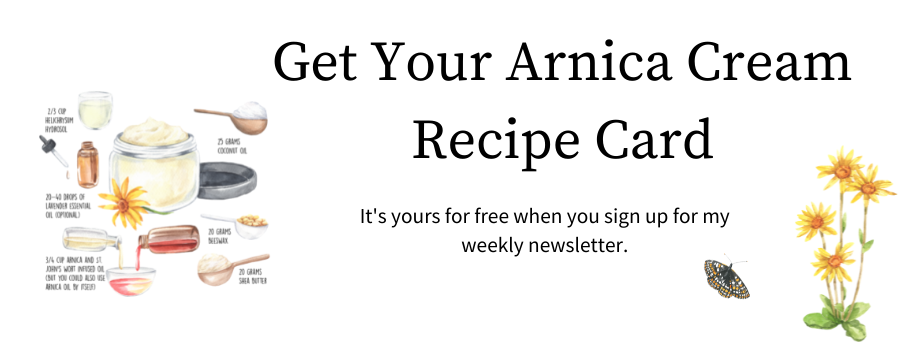
Transcript of the What is Arnica Used For Video
One of my favorite arnica benefits is for bruises! In this video I am going to show you how to make an arnica cream using Arnica montana! Once you start making this cream you’ll never want to be without arnica’s benefits again because it is so effective at relieving pain, swelling, and inflammation caused by bruises, contusions, and sprains. I’m also going to share why arnica is way better than ice for injuries and give you a step-by-step guide on how to make arnica cream for bruises.
By late April, heart-shaped leaf spears begin emerging from the ground near my home.
They are small at first but persistent, sometimes covering entire areas as far as the eye can see. Each day the leaves are noticeably larger and, by early May, the entire forest floor is radiating with their golden blooms.
Arnica cordifolia, or heartleaf Arnica, grows ubiquitously through the Great Lakes region and the western half of North America. Spreading by rhizomes, it is often found growing in thick clusters throughout the shady forests it prefers.
In western and eastern Europe, Arnica montana, heartleaf Arnica’s more famous cousin, is harvested by the millions to satisfy the demand for its healing gifts (some estimates say as much as 300 metric tons per year are harvested in Europe alone). Whether for acute or chronic injuries, Arnica is a reliable ally for modulating inflammation, relieving pain, and reducing swelling.
Arnica is so popular because it works so well! I never get tired of hearing stories about how arnica healed bruises, contusions, sprains, arthritic pain and on and on. If you have an arnica story, let me know in the comments below. It’s always interesting and insightful to hear the experiences of plant lovers out there. Your suggestion may also help others!
To get you started here’s a story from Beverly Gray from her book, The Boreal Herbal:
“Like so many before me, I have called on arnica’s medicine more times than I can remember to reduce pain and promote healing. I once slammed my fingers in the car door. Luckily, I had some arnica cream in my bag. I applied it and within half an hour it was as if the incident hadn’t happened; my fingers were fine. Once you welcome the healing properties of this plant into your life, it’s hard to live without it.”
Before we get to the instructions for making arnica cream for bruises, let’s look at what is arnica used for.
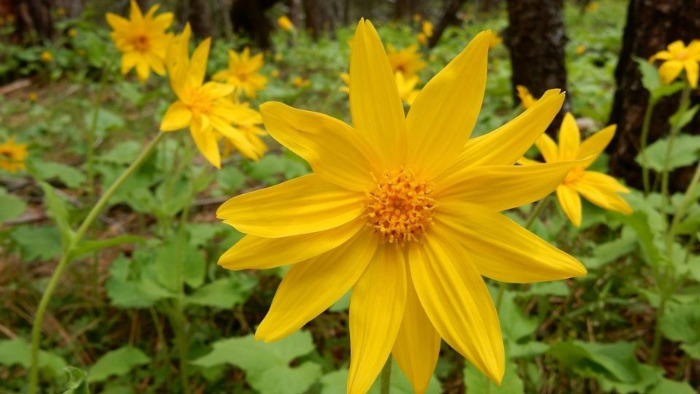
What is Arnica Used For: Heal Injuries and Reduce Acute Pain
Arnica montana is renowned for helping with bumps, bruises, pain, and swelling caused by minor acute injuries or muscle overuse. It is commonly used as both a homeopathic medicine and topically as an herbal salve or cream.
Arnica was one of the first plants to show me how amazingly effective plant medicine can be. It helped me move from thinking that herbalism was antiquated or a cute hobby to realizing how useful and powerful it can be.
The very first herb class I took, about twenty years ago, was about making salves and lip balms. I was immediately obsessed! I started making my own batches at home and gave them to friends and family. I made A LOT … it was so much fun!
Early on, I gave Arnica salve to a friend who danced professionally. Not long after, she called to tell me that the salve magically erased her daily bruises. She was also giving it to the other dancers and had already used all that I had sent. Could I send more, she asked?
I love arnica for bruises and I strongly prefer it to using ice!
We’ve long been told that ice and anti-inflammatories are the answer to our injuries, but there is increasing evidence showing that these common interventions actually inhibit your body’s ability to heal.
That’s because we need inflammation to heal!
We often hear about the problems of chronic or systemic inflammation, and for good reasons; but acute inflammation following an injury is beneficial.
With inflammation following an acute injury blood rushes to the area, carrying important immune system cells and hormones that will help prevent infection and start the healing process. Furthermore, as fluids rush to the area, swelling occurs, which helps to protect the injured area.
Icing and over the counter pharmaceuticals like NSAIDs during this stage slows the flow of essential healing nutrients to the injury. You may initially have less swelling and less pain but the result is prolonged healing and even an increased likelihood of long-term problems.
Here’s why arnica montana is so awesome.
Arnica strongly modulates inflammation and may work by dilating capillaries, which increases blood flow to and from the injury. This increased blood flow brings healing substances to the area and moves stagnant blood, like you see in bruises. The result is decreased swelling and faster healing time. I like to use Arnica as soon as the bruise or injury occurs.
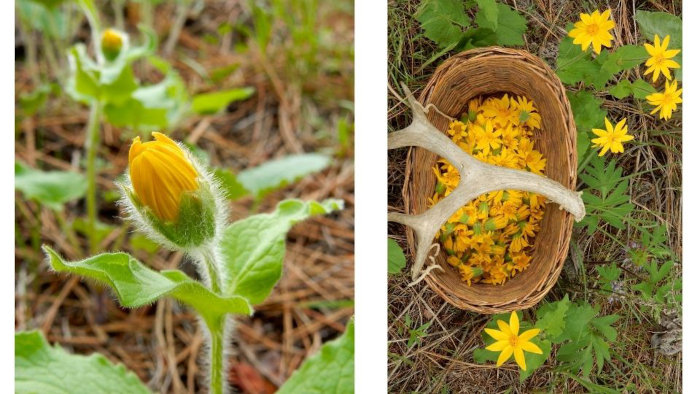
What is Arnica Used For: Relieve Chronic Pain
In addition to being used for acute injuries, Arnica montana can also relieve chronic pain and inflammation, like the pain and swelling of arthritic joints.
One study compared the use of Arnica gel to ibuprofen gel in 204 patients diagnosed with osteoarthritis in their hands. The study showed that the Arnica gel was just as effective as ibuprofen at relieving pain intensity, reducing the severity of morning stiffness, and increasing hand function capacity.1
What is Arnica Used For: Promote Circulation
Arnica can be used externally to specifically promote circulation in cases of stagnation. This is one of the ways it is useful for bruises, but the use extends beyond that. Arnica is frequently added to hair products both for hair loss (stimulating blood circulation to the scalp can encourage hair growth) and for dandruff. Arnica was historically used for chilblains, which is damage to the capillaries caused by extreme cold. Arnica can also be applied topically to varicose veins and broken capillaries.
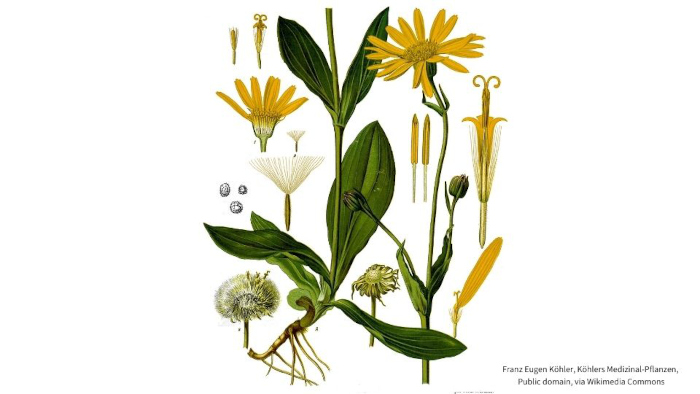
What is Arnica Used For: How to Identify Arnica montana
There are about 30 different species within the Arnica genus. Many are used similarly. Arnica montana, originally from Europe, is commonly used in manufactured products. Because of the huge demand for Arnica montana, there has been a lot of effort to source sustainably grown Arnica to decrease the drain on wildcrafted resources.
Arnica cordifolia grows over western North America and is what I use in all of my herbal preparations. I am including botanical information for both plants.
Arnica montana
Arnica montana grows in alkaline soils, especially in the forest. It reaches anywhere from 20-60 cm in height (8-24 inches).
The entire plant is hairy. The basal rosette leaves are ovate. The stem leaves grow opposite and lanceolate. The flowers are large yellow composite inflorescences with disk and ray flowers (similar to a sunflower) and an aromatic scent. The seed head is a sphere of fluffy pappus, reminiscent of a dandelion seed head.The roots are rhizomes.
Arnica cordifolia
Arnica cordifolia also grows by rhizomes and the flowers look similar to A. montana. However, the overall appearance of the plant is different.
A. cordifolia grows in coniferous forests and open meadows and reaches about 50 cm tall (20 inches). The entire plant is hairy with a downy fuzz. The leaves are heart shaped and slightly serrated. The flowers are golden yellow composite inflorescences with disk and ray flowers. They have a balsamic scent. Arnica can thrive following a forest fire.
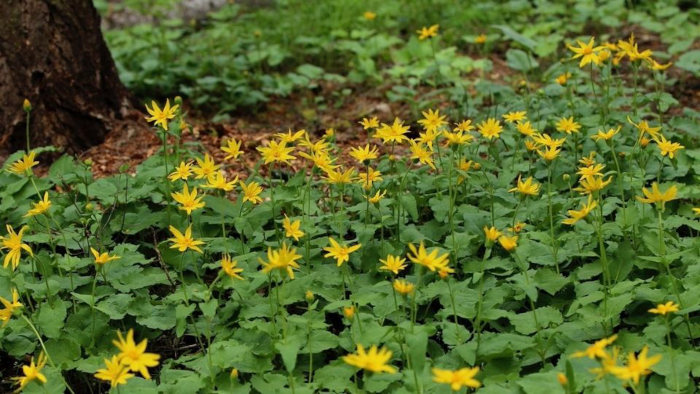
What is Arnica Used For: Issues with Adulteration
Arnica is commonly adulterated in the commercial markets. This may be in part because suppliers are unable to meet demand and they unethically replace it with another species or similar-looking flower; however, other times it may be due to a confusion with the common name.
A plant commonly called Mexican Arnica, Heterotheca inuloides (or the closely related H. subaxillaris), is commonly sold as Arnica in Spain, sometimes incorrectly identified as Arnica montana. On the other hand, these species of Heterotheca may be useful substitutes as the harvest of Arnica becomes less sustainable.
Gayle Engels from the American Botanical Council further explains:
“In a recent US survey of nine botanicals that had previously been reported to be adulterated or were suspected to be at risk of adulteration, 10 samples labeled ‘Arnica montana’ were purchased from separate vendors. Of the 10 samples, six were H. inuloides. The authors opined that the substitution might be economically motivated as H. inuloides is larger and more abundant and accessible in its native habitat, Mexico. However, they admitted that honest confusion might also be responsible as H. inuloides is called ‘Arnica’ in Mexico, and is used similarly, e.g., for bruises.”
Please take care in sourcing this plant. Buy only from companies that are Fair Wild certified, direct from harvesters who are carefully harvesting with the health of the plant and ecosystem in mind, or from cultivated sources.
For more information about the extreme importance of sourcing your herbs well, see my interview with Ann Armbrect here.
If you are interested in harvesting your own arnica then you’ll love my second book, which I wrote with Emily Han.
Wild Remedies: How to Forage Healing Foods and Craft Herbal Medicine shows you everything you need to know to feel confident about harvesting plants that grow around you.
The beginning chapters show you the exact skills needed to harvest safely.
And then each plant chapter gives specific information about that plant's benefits and gifts, how to grow and harvest the plant sustainably, and many recipes for food and medicine.
There are also beautiful botanical illustrations to help you correctly identify the plants in the book.
You can find Wild Remedies wherever books are sold. Once you buy the book don’t miss out on your exclusive bonuses here.
What is Arnica Used For: Arnica Side Effects
The Arnica herb is most often used topically, while the homeopathic remedy is the form taken internally. In the past, preparations of the whole herb have been recommended internally in very small dosages or as a gargle for a sore throat. There are serious risks to taking whole herb extractions internally, so it is no longer commonly recommended. Problems associated with Arnica’s internal use include lesions within the digestive tract and cardio toxicity. It is definitely not recommended internally while pregnant.
Here’s some other safety considerations.
- It is commonly recommended not to apply Arnica to broken skin.
- Touching Arnica while harvesting it can cause contact dermatitis in some sensitive individuals.
- Some people are allergic to Arnica. If you have sensitivities to plants within the aster family, it is recommended to try Arnica topically in small amounts to see how you react. Sometimes people develop a sensitivity to Arnica and start to experience redness or irritation. If that happens, discontinue use.
What is Arnica Used For: Fun Fact
Arnica and dandelions are in the same plant family. And, just like dandelions, arnica flowers will readily go to seed after they are picked. That’s why dried arnica looks like a lot of fluff. That’s okay though, it still works great.
If you are able to grow or ethically harvest arnica, then it’s best to harvest the flowers when they are still in their bud stage as this will help to lessen the fluff.
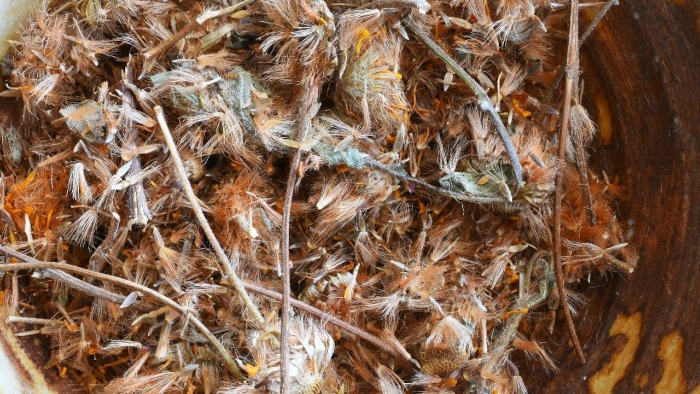
What is Arnica Used For: Arnica Cream for Bruises
Please click here to find the arnica cream for bruises recipe. You'll be able to download your free recipe card there.
If you enjoyed this video on what is arnica used for and how to make arnica cream for bruises and you value trusted herbal information, then I hope you’ll stick around! The best way to get started is to subscribe to my newsletter below so you can be the first to get my best herbal insights and recipes.
Citations for What is Arnica Used For
Click to show/hide.
Rosalee is an herbalist and author of the bestselling book Alchemy of Herbs: Transform Everyday Ingredients Into Foods & Remedies That Healand co-author of the bestselling book Wild Remedies: How to Forage Healing Foods and Craft Your Own Herbal Medicine. She's a registered herbalist with the American Herbalist Guild and has taught thousands of students through her online courses. Read about how Rosalee went from having a terminal illness to being a bestselling author in her full story here.
